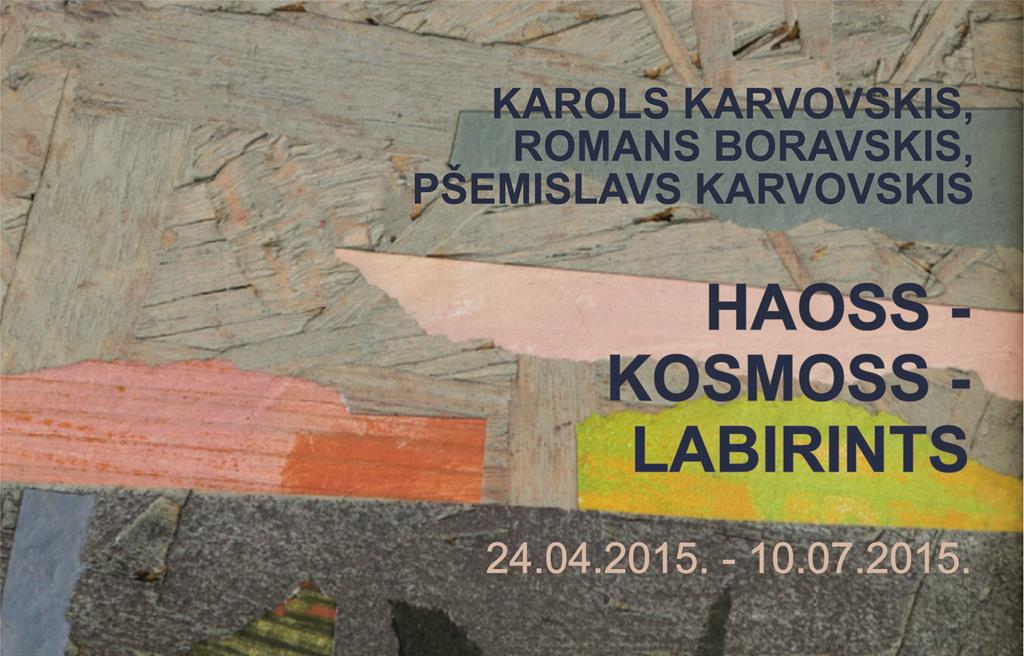Chaos – Cosmos – Labyrinth KAROL KARWOWSKI ROMAN BORAWSKI PRZEMYSLAW KARWOWSKI

Chaos – Cosmos – Labyrinth
Karol Karwowski
Roman Borawski
Przemyslaw Karwowski
Abstractionism – whether in its psychological and individualistic “hot” form, or in the “strict”, geometric one, sometimes dedicated to the creation of social utopias – does not solely consist in an abstraction from the depiction of objects, but also from the merely apparent, the visible and the invisible, chaos, and the spiritual world. A common denominator of abstract art is the artists’ search for archetypes, so as to bring order to chaos. For this reason we can assume – and such an assumption is very comforting – that beyond this chaos we can find a sacred geometry, when, looking at the big picture, we can distinguish in a stream of events the regularity of some particular elements. The timeless intuition of artists is also reflected in contemporary science, be it in the self-repeating form of the Mandelbrot set (fractal geometry) or in Lorenz’s meteorological theory, which defines chaos as a sphere of “seemingly random and unpredictable behavior that nevertheless proceeds according to precise and often easily expressed rules”. In art there are no neutral or “innocent” forms, unaffected by anything else’s meaning and thus truly abstract.
This thought was precisely expressed by Kandinsky in his treatise Concerning the Spiritual in Art (1912). Rothko was articulating this idea when he declared: “I’m not an abstract artist… I’m not interested in the relationship of colour or form or anything else. I’m interested only in expressing basic human emotions – tragedy, ecstasy, doom, and so on”.
Today, at the Daugavpils Mark Rothko Art Center, a place dedicated to the genius artist’s work, we have the opportunity to see and appreciate an exhibition of three Polish artists following the tradition of geometric abstraction: Roman Borawski and brothers Karol and Przemyslaw Karwowski.
Codes, cryptograms, cybernetic matrices, demarcation lines, and, finally, the winding paths of the labyrinth, are symbols that characterise the painting of Roman Borwawski, Karol Karwowski, and Przemyslaw Karwowski. Their intriguing compositions raise many questions: who is the Minotaur trapped in the darkness of the labyrinthos – an unwanted child, rejected by Concious, Subconscious, and Chance? Can we find harmony or at least some outline of a primordial Plan amongst chaos? Perhaps the cosmos (meaning also “order” in Greek) is compatible or even correlated with humanity – in any case some physicists think so (anthropic principle).
There’s no point to look for answers in art. The only possible ethical and spiritual path for an artist lies in a constant search, just like in Nietzsche’s book: a wanderer, with a dark companion – the shadow of Doubt.
Malgozata Stenpnika, Art Historian
www.rothkocenter.com







